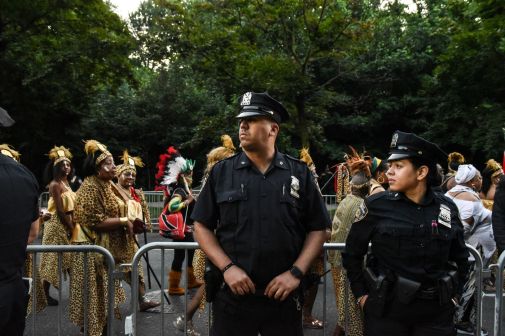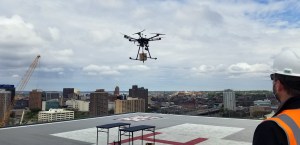Blood drones might be coming to New York

The New York City Fire Department is currently investigating the use of drones to deliver blood transfusions to scenes where traditional delivery methods might be slow or unavailable.
Officials in the city’s NYCx innovation program told StateScoop that they recently helped the fire department develop software to enable what they called “GrubHub for emergency supplies,” a comparison to the popular food-delivery app. Though FDNY likely still needs to navigate a multiyear approval process before it can fly blood-delivery drones in New York, developers said the proof of concept is a promising way to replace slower, phone-based processes of requesting blood transfusions or specialized gear to the site of an emergency.
Justin Isaf Man, the associate chief technology officer of digital services for the Mayor’s Office of the Chief Technology Officer, told StateScoop that drone delivery could be a useful tool in the event of a downed bridge, for example.
“A first responder or dispatcher can ask for blood through the app, it pings on the blood center for an order, they pack it, it generates a bar code for end-to-end tracking of the blood,” he said. “The person preparing the package scans a bar code, it registers in the system, a drone pilot from FDNY comes and picks it up at the blood center, takes it to the requested location.”
Locations can either be pre-vetted sites where FDNY knows it can safely land, like an open area in a park or a pier, or the app allows the user to run through a checklist to ensure the location meets various regulations, like that it’s free of power lines.
“It gets dropped off,” Man said. “The requester scans the barcode to continue tracking the life cycle, the drone pilot returns to base to wait for the next request and hopefully someone’s life gets saved along the way.”
Currently, this process is conducted through phone calls. Katherine Benjamin, the deputy CTO for digital services, said using an app is not only faster, but — thanks to the bar codes — it allows everyone involved to know at all times where the drone is located, which is particularly important if it’s carrying blood.
The project was developed during NYCx’s third cohort, a 10-week program that ended last month.
“I think part of what we tried to do with these projects, what we’re trying demonstrate is just how much value can be produced in 10 weeks using modern digital teams,” Benjamin said. “[There were] teams led by product managers with user researchers working in a user-centered agile way alongside a development team. We’re demonstrating that this is the caliber of service that residents can expect from government projects, this one of course being a particularly interesting one.”
Man said FDNY’s technology team has picked up the project since the NYCx cohort closed and that early testing will be done at a testing field upstate. New York State operates a 50-mile drone-testing corridor that runs between Syracuse and Rome, about a four-hour drive from Manhattan. FDNY, which already has exemptions to use drones for situational awareness applications in the city, was not available in time for publication to comment on the project.
Man said that although the department wanted to start with blood, the software was tweaked early on to accommodate all types of deliveries, a change he attributed to his team’s agile development methodology. That change to the project took 30 minutes, but could have taken weeks or months in a traditional “waterfall” development process, he said.
“This project was designed to be somewhat generic,” Man said. “They have several processes for tracking equipment requests right now. Some of them are paper, some of them are in multiple systems, some of them are spreadsheets. And there was some excitement around the idea that this system could be used for requesting a specialized saw to a crash that was delivered by a firetruck, so we actually built towards that.”





